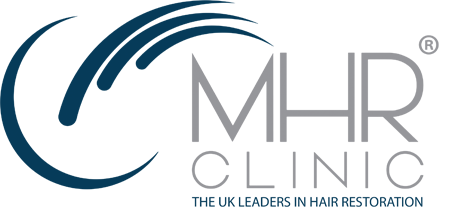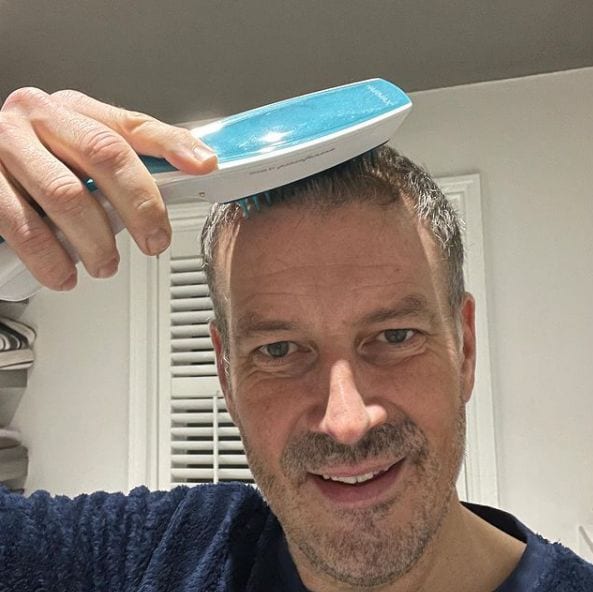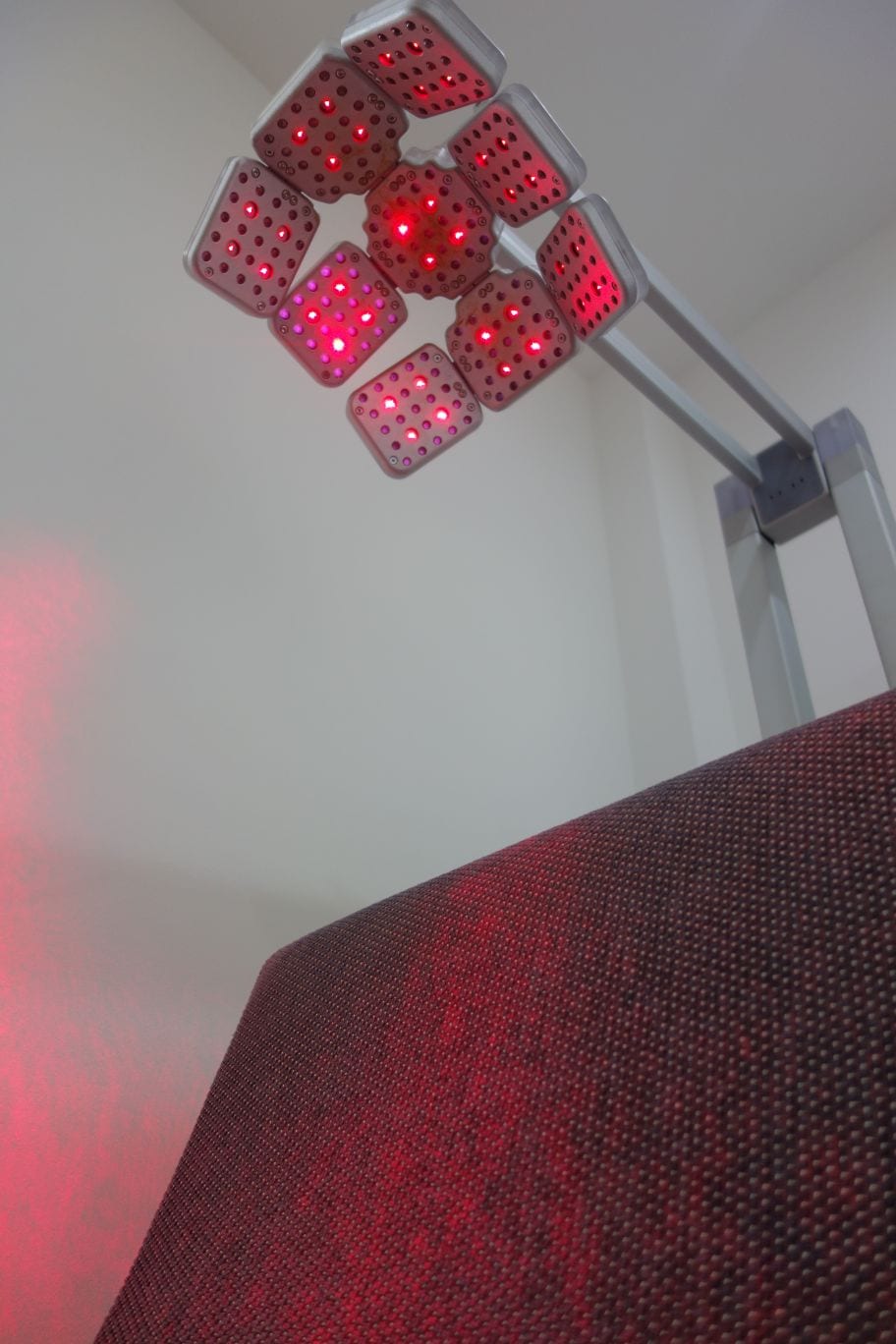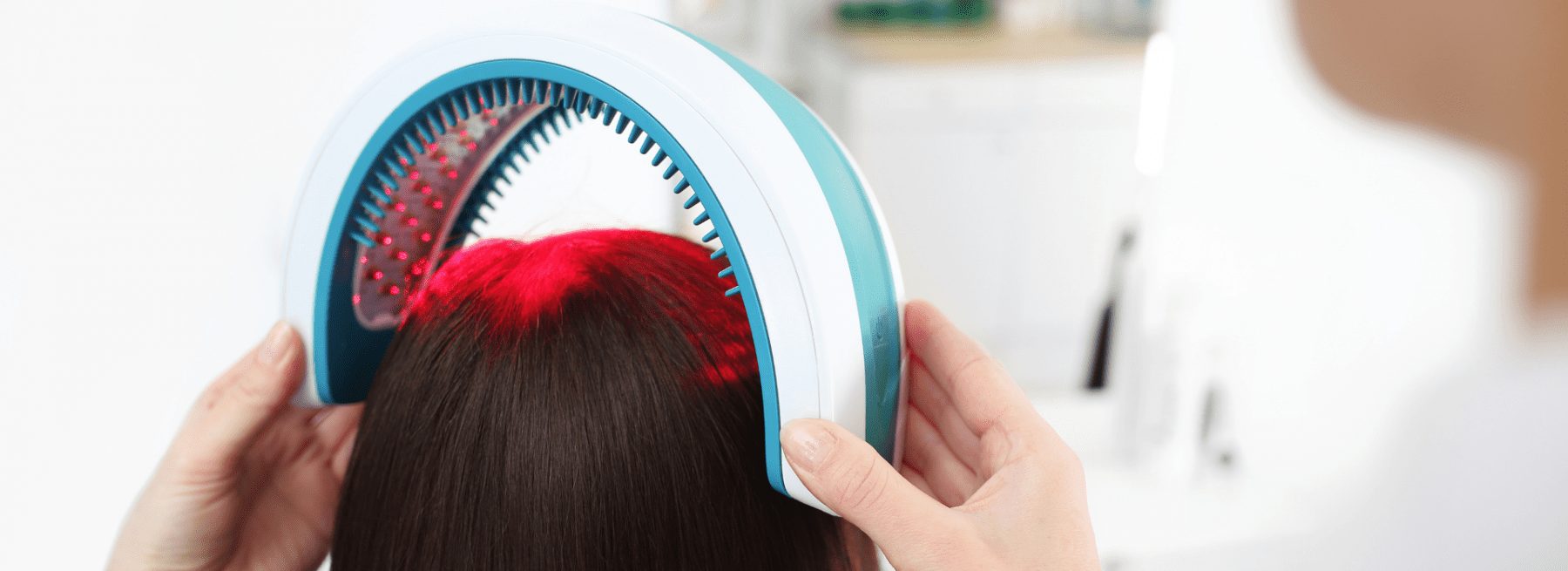
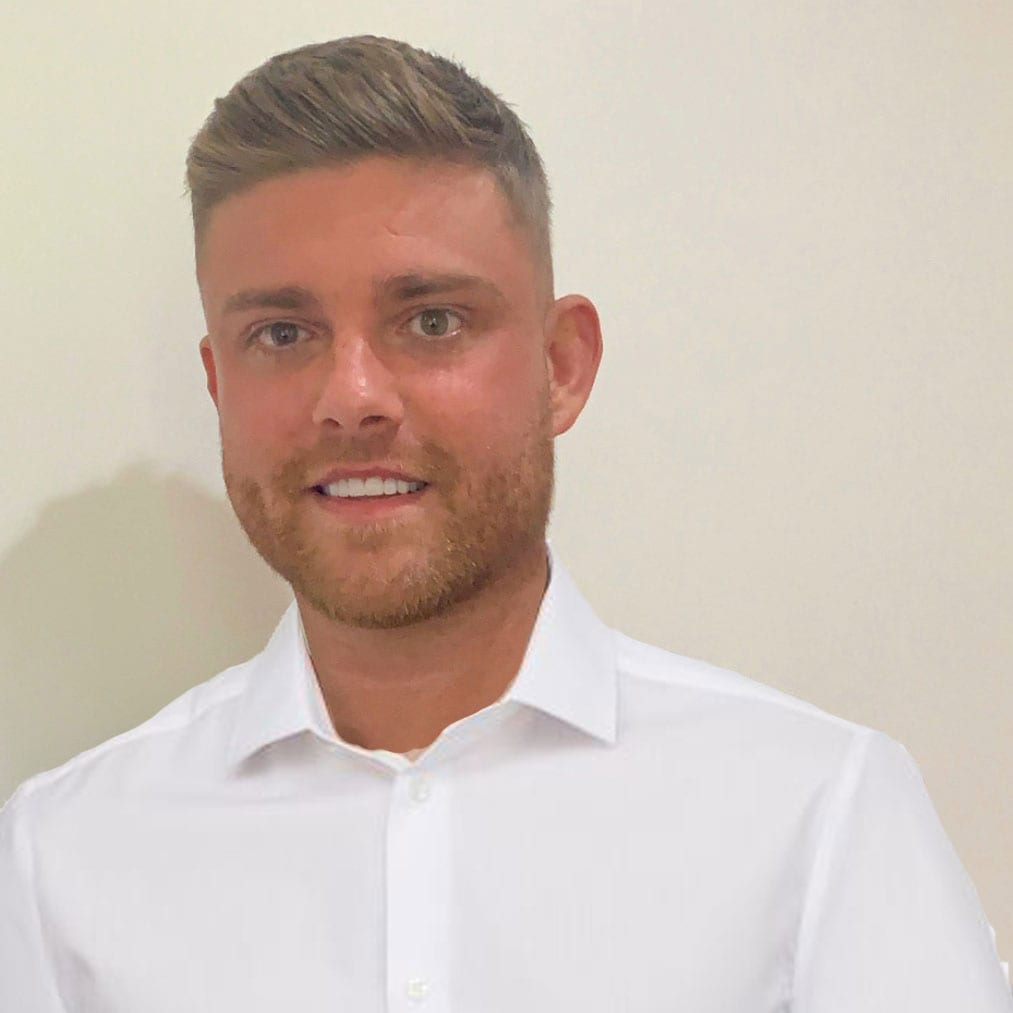
MHR Clinic practices a multi-faceted approach to hair growth restoration for clients and is often in a position to explain why laser hair regrowth might be the best treatment for them.
Whether they’re undertaking a hair transplant or not, our focus remains on generating as much hair growth from each of their follicles as possible.
Hair restoration requires a combination of treatments to succeed to the extent we do. We believe our results and reviews speak volumes for the success we have.
Perhaps the key to our amazing feats in hair restoration lies in low level laser therapy. We see it as a galvanising force behind the effect of hair loss medications, lotions, shampoos and nutrients.
Our clients typically spend two 40-minute sessions per month undergoing low level laser hair restoration sessions at MHR Clinic. They sit under a hood which directs photons from between 800 and 860 nanometres from the light spectrum onto their scalp.
Does low level laser therapy and laser hair growth hurt?
Laser hair growth treatment is a non-invasive and painless treatment with no side effects.
Laser hair growth treatment stimulates blood circulation and increases the delivery of oxygen and nutrients to hair follicles. It is most effective for people in the early stages of hair loss.
MHR Clinic uses a bespoke minoxidil lotion to relax blood vessels in the scalp. It allows more blood into capillaries connected to hair follicles.
Low level laser therapy then stimulates the flow so oxygen and nutrients so they reach the hair follicle and root in greater supply.
The result we see is laser hair regrowth which far exceeds that seen when using only medicines, lotions, shampoos and nutrients.
Medical bodies around the world have increased trials of low level laser therapy. All have proved it to be effective as a stand-alone remedy, and in conjunction with other hair loss treatments.
The American Society of Clinical Dermatology found laser therapy to show “efficacy in combination with topical minoxidil and when accompanying finasteride treatment” in trials on 225 patients in 2014.
More recently in 2016, Lasers in Surgery and Medicine Journal found LLLT was “a promising monotherapy for androgenetic alopecia” and was “an effective alternative for individuals unwilling to use medical therapy or undergo surgical options.”
How to use laser comb for hair growth
View our range of at-home laser hair regrowth treatments including a HairMax LaserBand 82 & a HairMax LaserComb Ultima 12
While the devices aren’t as effective as out class IIIa laser hoods, housed in Harrogate and Manchester, they do improve hair restoration results.
Using a laser comb is a straightforward practice. They can be used every day effectively for up to 8 minutes, whereas laser bands only require a minute and a half of use per day.
Holding a laser comb over the hairline and frontal region, then mid-scalp region and crown for equal periods in repetition is the best way to use the device.
